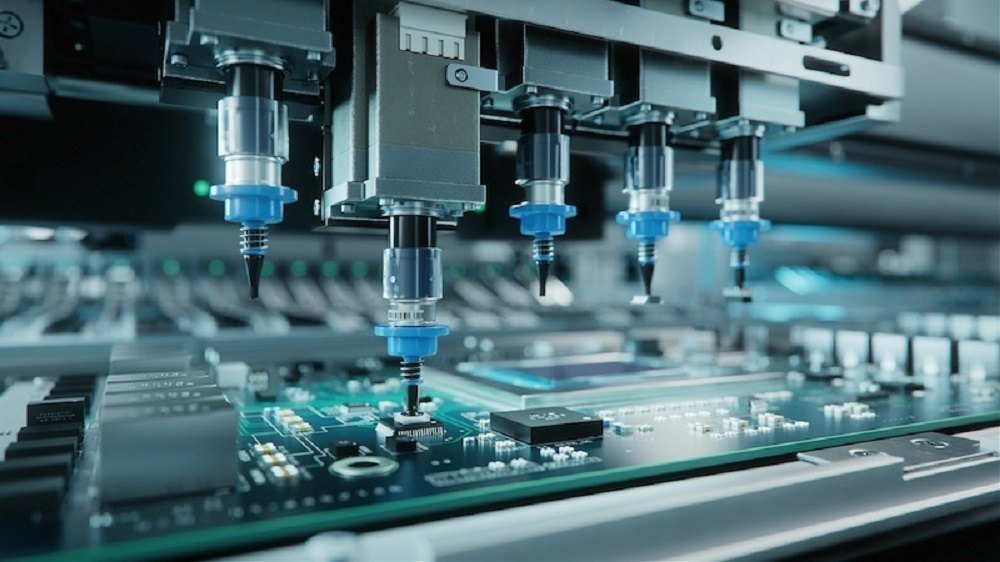Course Title:
Electronics Manufacturing: SMT (Surface Mount Technology) Process Mastery

Course Description:
This course provides an in-depth understanding of the Surface Mount Technology (SMT) process, the most widely used technique in electronics manufacturing for assembling components onto printed circuit boards (PCBs). Through this course, students, technicians, and engineers will gain both theoretical knowledge and practical insights into each stage of the SMT process—from solder paste printing to final inspection and testing. Learn how modern electronics are manufactured with precision and quality at high speed, using state-of-the-art automation and process control techniques.
What You Will Learn:
- Fundamentals of Surface Mount Technology (SMT)
- Complete end-to-end SMT assembly process
- Equipment used in each stage of SMT
- Process parameters and control techniques
- Quality control and defect analysis
- Industry standards (IPC, ISO) and best practices
- Troubleshooting common SMT issues
- Hands-on knowledge of SMT line operations
Topics & Lessons:
Topic 1: Introduction to SMT
- Lesson 1.1: What is SMT?
- Comparison of SMT vs. Through-Hole Technology
- Advantages of SMT in modern electronics
- Lesson 1.2: Applications of SMT in Industry
- Consumer electronics, automotive, aerospace, medical devices
- Lesson 1.3: SMT Line Overview
- Basic SMT production line structure and workflow
Topic 2: PCB Design for SMT
- Lesson 2.1: SMT-Compatible PCB Design
- Pad design, land patterns, footprint optimization
- Lesson 2.2: Design for Manufacturability (DFM)
- How to design PCBs for efficient SMT assembly
Topic 3: Solder Paste Printing
- Lesson 3.1: Stencil Printing Process
- Equipment used (solder paste printer, stencil)
- Key parameters: pressure, speed, alignment
- Lesson 3.2: Solder Paste Composition
- Leaded vs. lead-free, flux content, rheology
- Lesson 3.3: Solder Paste Inspection (SPI)
- 2D/3D SPI systems, defect detection techniques
Topic 4: Component Placement
- Lesson 4.1: Pick and Place Machine Operation
- Machine types: turret, gantry, chip shooters
- Programming and component feeders
- Lesson 4.2: Placement Accuracy and Speed
- Vision systems and alignment mechanisms
- Lesson 4.3: Component Handling & Storage
- Moisture sensitivity, ESD protection, reel storage
Topic 5: Reflow Soldering
- Lesson 5.1: Reflow Oven Zones
- Preheat, soak, reflow, and cooling zones
- Lesson 5.2: Reflow Profile Optimization
- Leaded vs. lead-free profiles
- Thermal profiling tools
- Lesson 5.3: Solder Joint Formation
- Wetting, surface tension, defects like tombstoning
Topic 6: Inspection and Quality Control
- Lesson 6.1: Automated Optical Inspection (AOI)
- Working principles and types of defects detected
- Lesson 6.2: X-Ray Inspection (AXI)
- BGA, LGA inspection where visual inspection fails
- Lesson 6.3: Manual Visual Inspection (MVI)
- When and where to use manual checks
- Lesson 6.4: Quality Standards in SMT
- IPC-A-610, ISO 9001 guidelines
Topic 7: Cleaning and Conformal Coating
- Lesson 7.1: Cleaning Processes
- No-clean flux vs. water-soluble
- In-line and batch cleaners
- Lesson 7.2: Conformal Coating Methods
- Spray, dip, brush techniques for harsh environments
Topic 8: Testing and Functional Verification
- Lesson 8.1: In-Circuit Testing (ICT)
- Flying probe vs. bed-of-nails testing
- Lesson 8.2: Functional Testing (FCT)
- Test jigs and embedded software validation
- Lesson 8.3: Burn-in Testing
- Stress testing for reliability
Topic 9: Defect Analysis and Rework
- Lesson 9.1: Common SMT Defects
- Bridging, opens, voids, insufficient solder
- Lesson 9.2: Root Cause Analysis Techniques
- 5 Whys, Fishbone diagrams
- Lesson 9.3: Rework and Repair Techniques
- BGA rework stations, hot air, soldering tools
Topic 10: SMT Process Optimization and Industry 4.0
- Lesson 10.1: Process Monitoring and Control
- SPC, OEE, yield analysis
- Lesson 10.2: SMT Automation and Smart Factory
- IoT, AI, and predictive maintenance in SMT
- Lesson 10.3: Trends and Future of SMT
- Miniaturization, 3D integration, flexible PCBs
Career Opportunities:
Completing this course opens doors to careers in electronics manufacturing and hardware production. Key roles include:
- SMT Line Operator
- SMT Process Engineer
- Quality Assurance Engineer
- Electronics Manufacturing Technician
- Test and Debug Technician
- Production Supervisor
- NPI (New Product Introduction) Engineer
- Manufacturing Engineer
- Automation Engineer (Industry 4.0)
Industries hiring for these roles include consumer electronics, automotive electronics, aerospace, defense, industrial automation, and medical devices.